Chat With Us
+91 99253 37969Exploring Various Ploughing Methods for Better Crop Yield
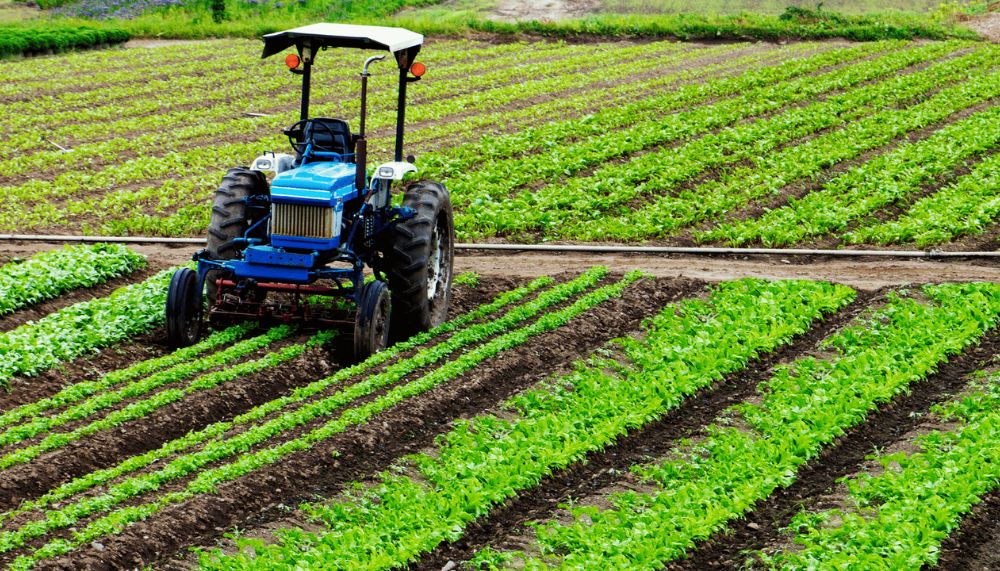
Ploughing is an essential process that prepares the soil for plantation. The method includes effective turning and inversion of soil to bring nutrients onto the top and improve the fertility of the soil. Moreover, the process involves the creation of furrows, weed control, and aeration of soil. However, the process of ploughing can vary according to different lands and farming needs.
So understanding all these methods not only can help in improving the productivity in farming but also help you to adopt innovative practices. Let's uncover different ploughing methods.
Different Ploughing Methods for Effective Results In Agriculture
Traditional Ploughing
Conventional or traditional ploughing methods include the use of manual plough. This is a labour-intensive process where animals are used to drive the plough. Traditional ploughing is still used in several places in India for primary and secondary tillage activities. However, the curve is shifting towards tractor-driven ploughs and the implementation of traditional ploughing is reducing rapidly.
Advantages:
- Low-cost method.
- Simple and non-technical procedure.
Disadvantages:
- Less productive method in comparison to modern-day ploughing.
- It is a very slow process.
- Manual ploughing is a labour-intensive method.
Mechanized Ploughing Methods
1. Mouldboard Ploughing:
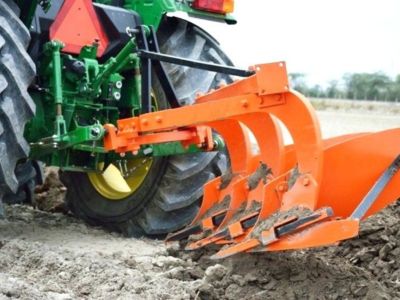
Mouldboard ploughing is generally implemented for heavy and clayey soils. The ploughing activity is conducted by using a tractor-driven mouldboard plough that has curved metal blades. The curved blades penetrate through the soil and flip it over. The implementation of mouldboard is popular for its deep digging functionality. Mouldboard ploughing is beneficial for flat and gently sloped lands.
Advantages:
- It is effective in weed control.
- Improves aeration and helps the root grow better under the soil.
- It is one of the effective methods of residue management.
Disadvantages:
- It increases the chances of soil erosion.
- Mouldboard ploughing can lead to moisture loss in soil.
2. Disc Ploughing:
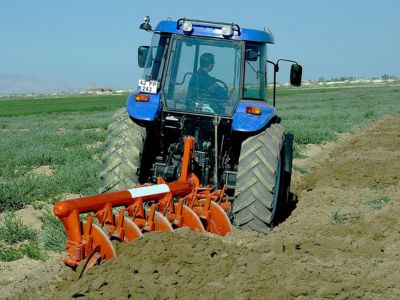
Disc ploughing provides benefits in hardy and rocky soils where topsoil conservation becomes an important factor. Farmers use tractor-operated disc ploughs to break the soil and create furrows. The metallic rotating discs can easily penetrate the soil without causing any harm to the humus layer and prevent erosion. Therefore, disc ploughing is ideal for regions that are suffering from soil erosion or water scarcity.
Advantages:
- It offers aimed and less destructive ploughing that reduces the chances of soil erosion.
- It can be operated in a variety of conditions and provides diverse functionality.
Disadvantages:
- Technical knowledge and practice are required to operate.
- Power consuming operation.
3. Chisel Ploughing:
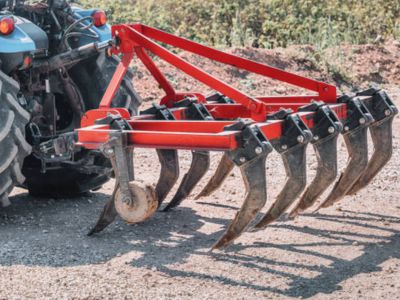
Chisel ploughing is one of the conservative tillage techniques used in compact agricultural lands for better productivity. The strategic structure of a chisel plough includes long and narrow shanks that can penetrate deep into the soil and invert effectively.
Advantages:
- It can easily break the hardpan and result in a better soil structure.
- This method helps in moisture retention by conserving soil residues.
Disadvantages:
- Chisel ploughing is comparatively less effective for weed control.
- Continuous use can result in soil roughness.
4. Rotary Tilling:
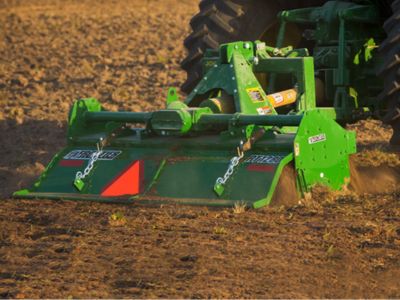
Rotary tilling is a ploughing practice that is often used for seasonal crops. It involves the utilization of a rotary tiller that chops and inverts the soil to create a fine seed bed. It is an economical process and is implemented in compact farms for high crop yield.
Advantages:
- Rotary tilling can effectively break soil lumps and create a fine seed bed.
- It appropriately mixes up the soil to maintain the uniformity of organic matter.
Disadvantages:
- Frequent use of rotary tilling can lead to compaction of soil.
- Intensive use can disrupt the soil structure.
Directional and Specialized Ploughing
1. Continuous Ploughing
Continuous ploughing is a traditional large-scale farming method for immediate seedbed preparation and weed control. The process includes repetitive inversion of the soil surface by using various implementation means to create a uniform seedbed.
Advantages:
- Continuous ploughing is effective in weed control and reduces competition for nutrients.
- The process creates a uniform seedbed.
Disadvantages:
- Continuous ploughing can lead to the threat of soil erosion.
- It is an energy-consuming and labour-intensive process.
2. Round And Round Ploughing
Round and Round Ploughing which is also known as contour ploughing is an innovative method to create seed beds in farms. Unlike traditional methods, here the ploughing process is carried out along the perimeter and not in a straight line. In Contour ploughing, we create furrows perpendicular to the centre of the landscape.
Advantages:
- This method can effectively prevent soil erosion by water in sloped areas.
- The method improves the water retention capacity of the soil.
Disadvantages:
- It is a labour and time-consuming process.
- It requires several mechanized equipments, therefore considered as a costly method.
3. One Way Ploughing
One-way ploughing is a method where unidirectional tillage activities are conducted to improve the fertility of the soil. In most cases, disc ploughs and mouldboard ploughs are implemented to do one-way ploughing. It is beneficial for lands that are suffering from water scarcity.
Advantages:
- Improves water retention quality of soil.
- Prevents soil erosion.
- Improves fertility of the soil.
Disadvantages:
- Repetitive use of one-way ploughing can result in damage to nutrient-rich topsoil.
- The process is not very effective for weed control.
Conclusion
In summary, the methods of ploughing can differ from land to land and as per the needs of plants. Therefore, the selection of the right procedure and tools is required to gain optimal results. Carefully review all the methods outlined in this blog and select the one that best fits your soil type.
You May Also Like:







